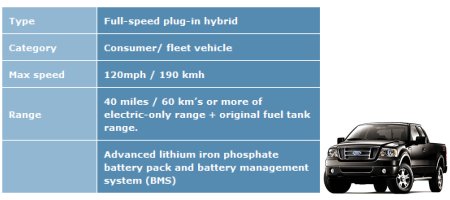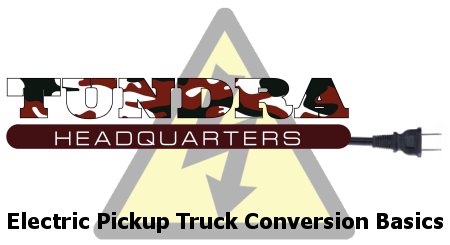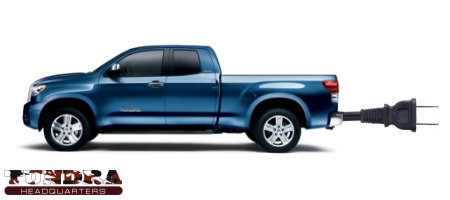 All Entries Tagged With: "plug-in pickup"
All Entries Tagged With: "plug-in pickup"
Commercial Electric Pickup Truck Conversions
Not everyone is comfortable hacking together their own custom electric pickup truck conversion. The technology used in this type of vehicle is often unfamiliar to even the most dedicated gearhead. It can also take a lot of time, garage space, money, and trial and error to accomplish…items not always in plentiful supply for people who lead busy lives.
Fortunately, there are a number of companies that now offer turnkey electric conversions directed at pickup truck owners. Both the United States and Canada have seen an explosion of entrepreneurs tuned into the electric vehicle movement. These organizations offer professional installations of a complete electric driveline, along with service plans and warranties to help preserve peace of mind while tooling down the highway.

Rapid Electric Vehicle F150 Electric Conversion Specs
Rapid Electric Vehicles Technologies (REV) is based in Vancouver, British Columbia. They are focused on both individual and fleet conversions of the Ford F-150 full-size pickup truck, the Ford Ranger compact truck and the Ford Escape SUV. The F-150 is classified as a plug-in hybrid because the company leaves the original gasoline engine as-is and adds an electric motor powered by a lithium battery. This gives the truck a 40 mile range on a single charge. What’s more, the battery itself can be charged by either the truck’s gas-powered motor or regenerative braking.
Search terms people used to find this page:
- tundraheadquarters
Gas to Electric Pickup Truck Conversion Guide – The Basics
There are a wide range electric conversion options for truck owners interested in going full electric. Here are the basics:
Truck type: Until recently, smaller trucks were preferred over their larger cousins due to weight issues, but advances in battery technology had enabled even full-size drivers to take advantage of an completely emissions-free ride.

Electric Truck Conversion - a "short" guide.
Battery Options: Inexpensive conversions typically use lead acid or absorption glass mat (AGM) batteries – just like the battery under your truck’s hood right now. It’s not uncommon for amateur conversions to fill the truck bed with as many as two dozen 6 or 12 volt lead-acid or AGM batteries to go full electric. If you want to preserve your pickup bed for hauling (go figure), batteries can also be located in the passenger compartment, under the hood, or anywhere you can make them fit.
If money is no object, then nickel / metal hydride (NiMH) batteries, which are identical to those used in vehicles like the Toyota Prius, can be used for conversions. If money is really no object (and that’s not just an expression), then ultra-high end lithium ion (Li-ion) batteries can be used. Both Li-ion and NiMH batteries may require special cooling systems, but they are lighter than lead-acid and AGM batteries and take up far less room in a typical conversion.
Search terms people used to find this page:
- tundraheadquarters
The Case for the Plug-in Electric Pickup
Plug-in electric cars are on the way. Both mainstream automakers and boutique brands are aiming to capitalize on the growing desire amongst drivers to wean themselves off gasoline. While gasoline / electric hybrids have been around for years, the idea of a pure electric vehicle – one which runs exclusively off of a battery and must be recharged by plugging in to a standard electrical socket – is for many the ultimate goal of the hybrid revolution.
While automakers are developing plug-in hybrids, it’s important to note that most of the plug-in hybrid vehicles being introduced are sedans and coupes – not trucks. Automakers have yet to embrace the concept of a plug-in pickup, and some green types are using this fact to argue that the days of big pickups are over. However, the fact is many people need a truck for work and/or their daily lives. So why haven’t automakers started producing plug-in pickups? It’s not size…at least not completely.

Where is the Electric Toyota Tundra?
Pickups are big, and their larger dimensions might seem to be the reason that automakers aren’t producing hybrid versions. After all:
- Most hybrid electric vehicles on the market are small.
- It takes a more powerful electric motor to get a big pickup rolling.
However, size isn’t really the problem…kind of.
Search terms people used to find this page:
- tundraheadquarters

